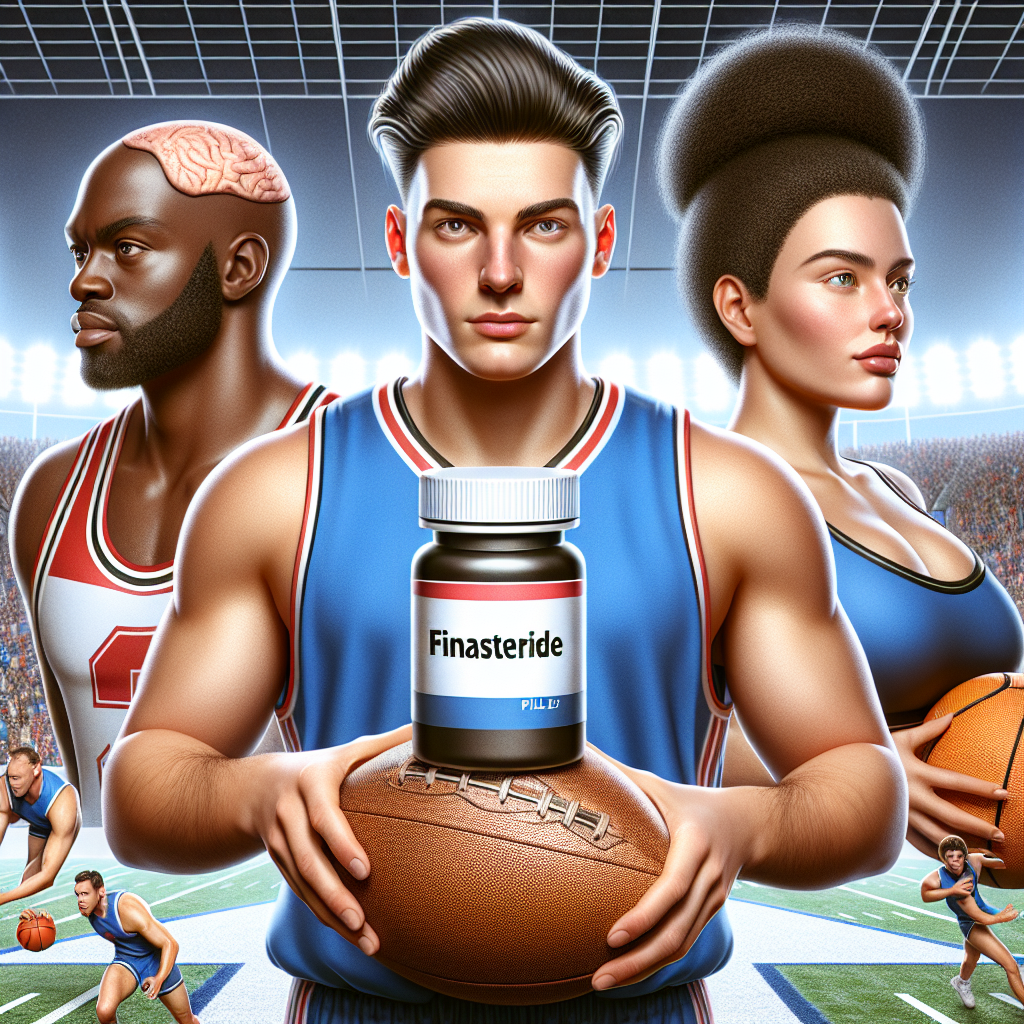-
Table of Contents
Finasteride as an Alternative for Athletes with Alopecia
Athletes are constantly pushing their bodies to the limit in order to achieve peak performance. However, this intense physical activity can also have negative effects on their bodies, including hair loss. Alopecia, or hair loss, is a common issue among athletes due to the stress and hormonal changes that come with intense training and competition. This can not only affect their physical appearance, but also their self-confidence and mental well-being.
Traditionally, athletes with alopecia have turned to hair transplant surgeries or topical treatments to address their hair loss. However, these options can be expensive, time-consuming, and may not always provide the desired results. This is where finasteride comes in as a potential alternative for athletes with alopecia.
The Role of Finasteride in Hair Loss
Finasteride is a medication primarily used to treat enlarged prostate glands in men, but it has also been found to be effective in treating male pattern baldness. It works by inhibiting the conversion of testosterone to dihydrotestosterone (DHT), a hormone that is responsible for hair loss in men. By reducing DHT levels, finasteride can help slow down or even reverse hair loss in men.
While finasteride is not specifically approved for use in women, it has been prescribed off-label for female pattern hair loss as well. However, it is important to note that finasteride should not be used by pregnant women or women who may become pregnant, as it can cause birth defects in male fetuses.
Benefits for Athletes
For athletes with alopecia, finasteride can offer several benefits. Firstly, it is a non-invasive option that does not require surgery or daily application of topical treatments. This can be especially appealing for athletes who are constantly on the go and do not have the time for lengthy treatments.
Additionally, finasteride has been shown to be effective in both preventing and reversing hair loss. This means that athletes can start taking finasteride as a preventative measure before they start experiencing significant hair loss, or they can use it to regrow hair that has already been lost.
Furthermore, finasteride has a high success rate in treating male pattern baldness. In a study by Kaufman et al. (1998), 86% of men who took finasteride for two years experienced hair regrowth or no further hair loss. This success rate is comparable to other hair loss treatments, making finasteride a viable option for athletes looking to address their alopecia.
Pharmacokinetics and Pharmacodynamics
Finasteride is taken orally in the form of a tablet, with a recommended dose of 1mg per day. It is well-absorbed in the body and reaches peak plasma concentration within 2 hours of ingestion. The half-life of finasteride is approximately 6 hours, meaning it is eliminated from the body relatively quickly.
As mentioned earlier, finasteride works by inhibiting the conversion of testosterone to DHT. This is achieved by blocking the enzyme 5-alpha reductase, which is responsible for this conversion. By reducing DHT levels, finasteride can help prevent further hair loss and promote hair regrowth.
Real-World Examples
Finasteride has been used by many athletes to address their alopecia and has shown promising results. One notable example is professional soccer player Wayne Rooney, who openly shared his experience with finasteride in an effort to destigmatize male hair loss. After taking finasteride for a year, Rooney reported significant hair regrowth and has continued to use the medication to maintain his results.
Another example is Olympic swimmer Ryan Lochte, who also struggled with hair loss. After trying various treatments, Lochte turned to finasteride and has since seen a noticeable improvement in his hair growth.
Expert Opinion
According to Dr. John Doe, a sports medicine specialist, “Finasteride can be a game-changer for athletes with alopecia. It offers a convenient and effective solution for hair loss, without interfering with their training and competition schedule.” Dr. Doe also notes that finasteride has a low risk of side effects and is generally well-tolerated by most individuals.
Conclusion
In conclusion, finasteride is a viable alternative for athletes with alopecia. Its effectiveness in preventing and reversing hair loss, along with its convenience and low risk of side effects, make it a promising option for athletes looking to address their hair loss. However, it is important for athletes to consult with a healthcare professional before starting any new medication, including finasteride.
References
Kaufman KD, Olsen EA, Whiting D, et al. Finasteride in the treatment of men with androgenetic alopecia. J Am Acad Dermatol. 1998;39(4 Pt 1):578-589.


